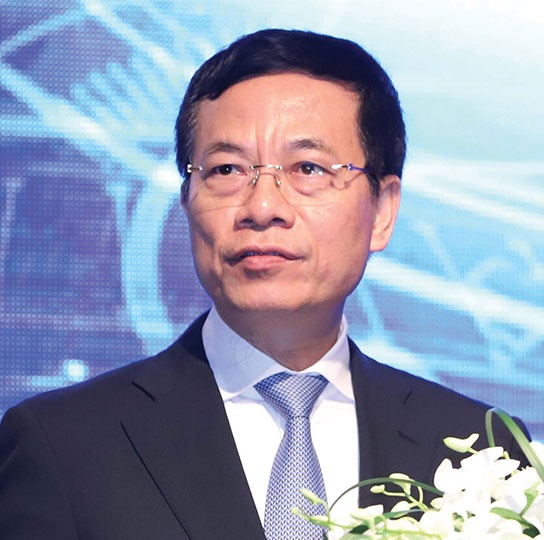New era, new prospects for business
 |
| Nguyen Manh Hung, Minister of Information and Communications |
Over the past two years, the COVID-19 pandemic has brought about many challenges for us. The pandemic will pass one day, but the important thing is who will take advantage of the opportunity that it brings about, who will be the quick adaptors, and who can make timely changes in business models to advance with stronger vitality.
Many countries have done this already, and so did many businesses by quickly putting their operations into the digital environment.
Here, the government has enacted an e-government development strategy. E-public services will rise from 30 per cent in 2020 to 100 per cent this year. The government’s activities will be put into the digital environment soon, even with inspections. It will lead the national transformation to accelerate the process by completing digital regulations. This year, the government has enacted a lot of decrees and strategies related to this transformation and the digital economy.
To win people’s confidence and then put their operations into the digital environment, ensuring safety and network security is a prerequisite. It is good news that in 2020, Vietnam was ranked 25th out of all countries worldwide in terms of network security. In Asia-Pacific, Vietnam ranks seventh.
To accelerate this digital transformation, telecoms operators have jointly launched a COVID-19 relief telecoms and internet package worth VND10 trillion ($434.8 million). The Ministry of Information and Communications (MIC) has directed digital technology companies to build a software package to support small- and medium-size enterprises with no application charge in the first 3-6 months. Currently, it attracts over 10,000 businesses.
In 2021, the telecommunications network is bringing access to the last 2,000 points nationwide that mobile waves cannot reach to increase internet and telecom coverage to all people. Elsewhere, the programme for one million computers for children launched by the prime minister is also a push for digital transformation in the education sector and the wider development of a digital society.
The government will sign a decree on frequency auction by the end of this year that enables the MIC to grant 4G/5G frequency for network operators to invest in increasing size and, especially, increasing 5G coverage nationwide in 2022. From 2023, 100 per cent of the population will be able to access smartphones. Vietnam’s digital infrastructure strategy sets the target of ranking in the top 30 worldwide before 2025, meaning that businesses in Vietnam will be able to access modern infrastructure to develop the digital economy.
To go digital, e-payments are considered as the foundation. Mobile money is the most optimal solution to increase coverage of e-payments for the whole population in the fastest way. Now the final procedures are being completed so that the pilot license for mobile money will be granted this month.
Also, the government’s official COVID-19 prevention software has been integrated into one app. There are presently many apps developed spontaneously in the market to meet different demands, but the government’s one is the only official version.
In order to develop, Vietnam must go on its own path and base the process on its strength and power. The strength is to subdivide to make it agile, flexible, adaptable, economical, and effective. Therefore, this is also the path for not only the COVID-19 battle, but also economic development as a whole.
What the stars mean:
★ Poor ★ ★ Promising ★★★ Good ★★★★ Very good ★★★★★ Exceptional
 Tag:
Tag:
Related Contents
Latest News
More News
- Vietnam's IFC to target global investment flows (December 21, 2025 | 18:00)
- Ha Tinh breaks ground on major Vingroup industrial and energy projects (December 19, 2025 | 18:24)
- EVN launches major power infrastructure projects nationwide (December 19, 2025 | 18:17)
- VAL inaugurates second production line to meet domestic animal feed demand (December 19, 2025 | 16:37)
- Sun Group pioneers urban tram system in Phu Quoc (December 19, 2025 | 15:00)
- Top 10 notable events of Vietnam’s industry and trade sector in 2025 (December 19, 2025 | 14:00)
- Seven major projects launched to drive Hanoi’s next growth phase (December 19, 2025 | 14:00)
- Rare, beautiful, sustainable: the mark of iconic real estate (December 19, 2025 | 08:00)
- Mondelez Kinh Do - a chapter of purpose-led leadership in Vietnam (December 18, 2025 | 09:44)
- VNPAY services receive the highest-level PCI DSS international security certificates for six consecutive years (December 17, 2025 | 23:47)
























 Mobile Version
Mobile Version